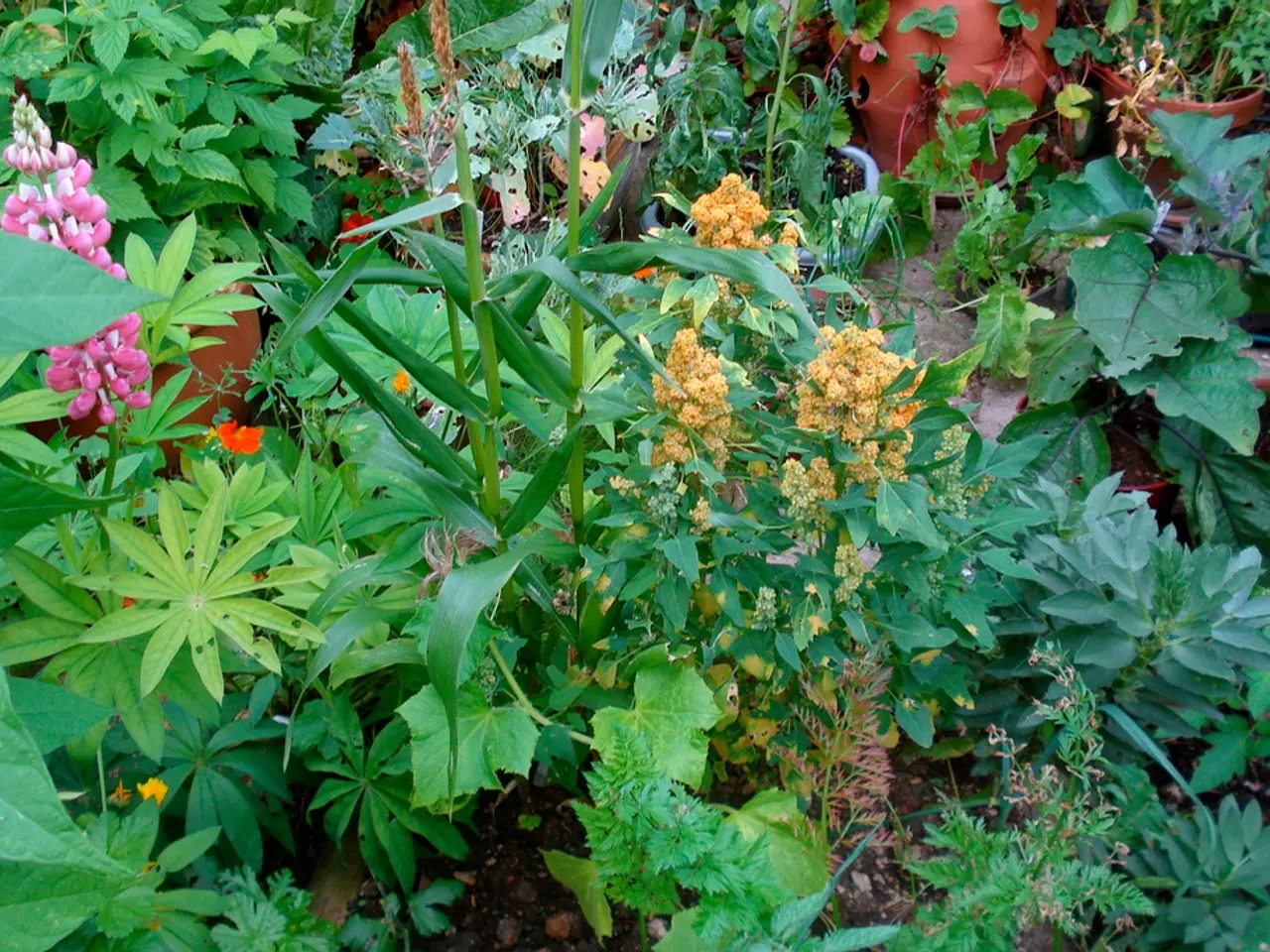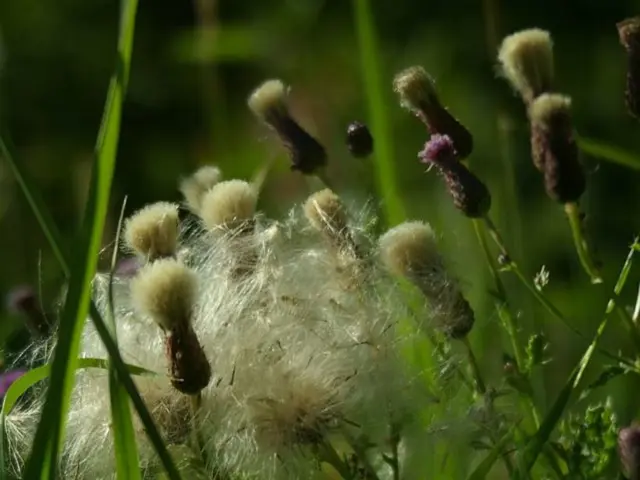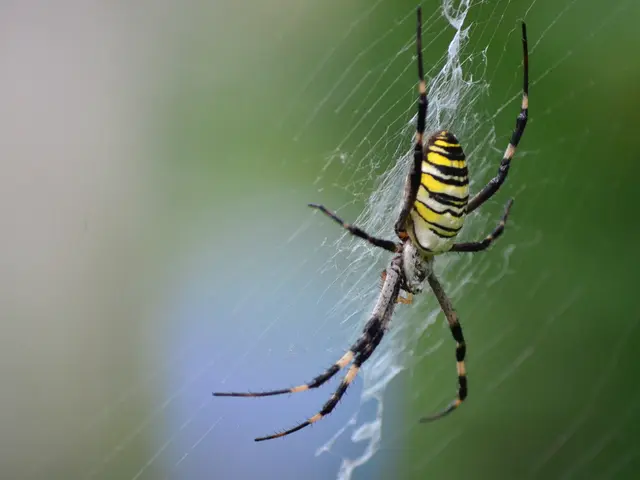Common Challenges Encountered by Every Florida Gardener:
Florida gardening is a unique adventure with its own set of challenges and rewards. The Sunshine State's climate creates an extraordinary gardening experience unlike anywhere else in the US. From battling peculiar pests to embracing the year-round growing season, Florida gardeners share a common bond through these universal experiences.
Gardening in Florida means adapting to conditions that can change dramatically from one season to the next. The reward comes in vibrant tropical blooms and fresh vegetables when northern states are still covered in snow. But these benefits come with a special set of circumstances that every Florida gardener will instantly recognize.
Weed Foes
Florida's warm, humid climate creates the perfect environment for weeds to thrive year-round. Gardeners find themselves constantly battling these persistent invaders, which seem to sprout overnight, turning a beautifully manicured garden into a wild patch in just days. Maintaining control requires consistent attention and strategic approaches. Successful gardeners learn to identify the most problematic species like dollar weed, creeping charlie, and cogongrass so they can target them effectively before they take over completely.
Weed Prevention Made Easy
Smart Florida gardeners know that prevention beats endless pulling. Landscape fabric beneath mulch creates a double barrier that significantly reduces weed pressure in ornamental beds. Pre-emergent herbicides applied at the right time can also prevent weed seeds from germinating without harming established plants. Natural approaches prove effective for many gardeners too. Regular applications of vinegar-based solutions target small weeds without introducing chemicals to the environment. But timing matters. Treating weeds when they're young and applying solutions on sunny days dramatically improves effectiveness compared to waiting until they've established strong root systems.
Taking on Sandy Soil Challenges
Florida's sandy soil is one of its biggest gardening obstacles. This fast-draining soil struggles to retain both moisture and nutrients, creating conditions where plants can quickly go from perfectly watered to drought-stressed in a single hot day. The frustration of watching water disappear immediately after irrigation is a shared experience.
Raised beds offer a solution to Florida's challenging soil. By creating an environment with controlled soil composition, gardeners can grow virtually anything despite the native sand beneath. These elevated growing spaces also improve drainage during Florida's intense rainy season while allowing gardeners to customize soil pH for acid-loving plants like blueberries or alkaline-preferring vegetables like asparagus.
Embracing the Humidity
Florida's famous humidity affects more than just human comfort; it creates perfect conditions for fungal diseases that can devastate gardens. Powdery mildew, black spot, and various blights thrive in this moisture-rich environment, quickly spreading from plant to plant. Most Florida gardeners have experienced the heartbreak of watching fungal problems transform thriving plants into sickly specimens.
Experienced Florida gardeners embrace plant spacing that promotes airflow. Crowded plants create pockets of stagnant, humid air where diseases flourish. Proper spacing might mean fewer plants in each bed, but the improved health and vigor of those plants more than compensate for the reduced density. Strategic pruning also helps combat humidity-related problems. Removing interior branches from shrubs and trees improves air circulation while reducing disease pressure.
Navigating Rainfall Patterns
Florida gardeners live with rainfall extremes that can shift dramatically. Bone-dry weeks can suddenly give way to daily downpours that flood gardens and drown plants. This unpredictability makes consistent garden care challenging, as watering needs can change completely from one week to the next.
Smart water management becomes essential for Florida garden success. Installing proper drainage systems before planting can prevent devastating losses during heavy rain periods. French drains, swales, and strategically placed rain gardens help move excess water away from sensitive plants while capturing it for drier times. Rainwater harvesting systems provide valuable insurance against dry periods. Rain barrels and larger cisterns connected to downspouts capture thousands of gallons during wet periods. This stored water becomes increasingly precious during Florida's inevitable dry spells, allowing gardeners to maintain healthy plants without excessive use of municipal water or private wells.
Coping with Cold Snaps
Florida's reputation as the Sunshine State can lull gardeners into a false sense of security about cold weather. Even in South Florida, occasional cold snaps can damage or kill tropical plants overnight. The devastating freezes that occur every few years can transform lush tropical landscapes into brown, dead zones in just hours.
The frustration intensifies when these cold events strike after weeks of warm weather that stimulated new growth. Fresh, tender growth damaged by unexpected frosts often means losing entire growing seasons for some plants. Long-time Florida gardeners develop a healthy skepticism about winter weather predictions, knowing that preparation matters more than forecasts.
Cold Protection Strategies
Experienced Florida gardeners keep frost protection materials ready throughout winter. Lightweight frost cloth, old bedsheets, and specialized plant covers can make the difference between minor damage and complete loss when temperatures drop unexpectedly. The ritual of covering sensitive plants becomes second nature for those who've experienced devastating freezes.
Strategic planting locations also provide natural protection. Areas near structures, especially on southern exposures, create microclimate effects that keep temperatures several degrees warmer during cold snaps. And grouping cold-sensitive plants together makes protection easier while creating small pockets of humidity that help buffer against temperature extremes.
Fighting Back Against Aggressive Pests
Florida's warm climate supports insect reproduction virtually year-round, creating pest pressure unlike anything northern gardeners experience. From tiny aphids to destructive lubber grasshoppers, the diversity and quantity of garden pests can overwhelm even experienced gardeners. Without freezing temperatures to reduce populations naturally, insects maintain high numbers throughout the year.
The introduction of new invasive species adds to this challenge regularly. Florida's position as a major shipping and travel hub means new pests arrive constantly, often without natural predators to keep them in check. Gardeners frequently discover unfamiliar insects damaging plants, leading to frustrating trial-and-error attempts at control before proper identification and management strategies develop.
Integrated Pest Management for Florida Gardens
Successful Florida gardeners embrace biological controls whenever possible. Encouraging beneficial insects like ladybugs, lacewings, and parasitic wasps creates natural balance that reduces the need for chemical interventions. Bat houses and purple martin gourds attract valuable allies that consume thousands of flying insects nightly during active seasons.
Regular inspection becomes part of the garden routine for experienced Florida gardeners. Catching pest problems early, when populations remain small, makes control significantly easier. This vigilant approach, combined with strategic use of insecticidal soaps and horticultural oils for serious outbreaks, helps maintain healthy gardens without resorting to harsh chemicals that might harm beneficial insects and pollinators.
Making the Most of the Year-Round Growing Season
Florida's extended growing season creates both opportunities and challenges for gardeners. While northern gardeners plan single growing seasons, Florida gardeners must think in terms of multiple planting windows for different crops throughout the year. This continuous production potential means Florida gardens can remain productive when most of the country lies dormant.
The flip side of this opportunity is the need for continuous attention and management. Gardens in northern states get winter breaks when gardeners can rest and plan, but Florida gardens demand year-round care. This perpetual growing cycle can lead to gardener burnout without strategic planning and occasional rest periods built into the garden schedule.
Seasonal Planting Strategies for Maximum Harvests
Smart Florida gardeners reverse the traditional growing calendar, focusing on cool-season crops during winter months when northern gardeners can't grow outdoors. Lettuces, kale, broccoli, and other cool-weather vegetables thrive during Florida's mild winters, producing abundant harvests when these items command premium prices in grocery stores.
Summer becomes the challenging season, when heat and humidity limit production of many popular vegetables. Experienced gardeners shift to heat-tolerant alternatives like sweet potatoes, southern peas, okra, and tropical spinach substitutes. This seasonal adaptation allows continuous production while working with Florida's climate patterns rather than fighting against them.
Fast-Growing Plants Challenge and Reward
Florida's combination of warmth, humidity, and long growing season creates astonishing growth rates that surprise gardeners from other regions. Plants that might take years to establish elsewhere can reach mature size in months, quickly outgrowing their allotted space and creating maintenance challenges. New gardeners often underestimate these growth rates when planning landscapes.
This rapid growth extends to both desirable plants and unwanted ones. Shrubs need more frequent pruning, perennials require division sooner, and trees grow more quickly than in cooler climates. The maintenance requirements created by this accelerated growth can overwhelm gardeners who don't anticipate the time commitment required to keep Florida gardens looking their best.
Managing Fast-Growing Florida Gardens
Successful Florida gardeners become experts at selecting the right plant for each space. They research mature sizes carefully and plan accordingly, rather than relying on the small dimensions of newly purchased plants. This long-term perspective prevents the all-too-common problem of overcrowded gardens that require constant pruning or eventual removal and replacement.
Strategic pruning becomes an essential skill rather than an occasional task. Knowing how and when to prune different plant species allows gardeners to maintain appropriate sizes while preserving natural forms and flowering cycles. And many experienced gardeners develop pruning schedules that spread this maintenance throughout the year rather than attempting major cutbacks that can stress plants during vulnerable periods.
Never-Ending Mulching
Florida's combination of heavy rains, hot sun, and active decomposition creates an environment where mulch breaks down incredibly quickly. While northern gardeners might refresh mulch annually, Florida gardens often need mulch replenishment multiple times per year to maintain effective weed suppression and moisture conservation.
This accelerated decomposition creates a perpetual need for mulch materials, becoming a significant ongoing expense for gardeners with large landscapes. The search for affordable mulch sources becomes a common topic among Florida gardening communities, with experienced gardeners developing networks of free or low-cost material sources to keep their gardens properly mulched without breaking their budgets.
Mulch Alternatives for Florida's Challenging Climate
Many Florida gardeners explore inorganic mulch options that resist decomposition in the humid environment. Materials like river rock, crushed shell, and recycled rubber products provide long-lasting alternatives to traditional organic mulches. While these materials require larger initial investments, their durability makes them economical over time in Florida's demanding conditions.
Living mulches offer another solution that works particularly well in Florida's climate. Ground covers like perennial peanut, sunshine mimosa, and beach sunflower create attractive, low-maintenance carpets that suppress weeds while adding visual interest. These living mulches also contribute to ecosystem health by providing habitat for beneficial insects and reducing the need for constant material replacement.
Welcoming Wildlife (Sometimes)
Florida gardens attract diverse wildlife that both enchants and frustrates gardeners. Colorful butterflies, hummingbirds, and songbirds create magical garden moments, while destructive visitors like raccoons, armadillos, and deer can demolish carefully tended plants overnight. This wildlife presence means Florida gardeners must consider both attraction and protection strategies in their garden planning.
The state's reptile population adds another dimension to garden wildlife encounters. Harmless black racers and beneficial garter snakes help control rodent and insect populations, while occasional appearances by venomous species create legitimate safety concerns. Learning to distinguish between helpful and potentially dangerous reptiles becomes an important skill for Florida gardeners who spend significant time among plants where these creatures may hide.
Creating Wildlife-Friendly Gardens While Protecting Plants
Successful Florida gardeners learn to balance wildlife habitat with garden protection. Strategic fencing deters larger animals while still allowing access for desirable pollinators and birds. Physical barriers around particularly vulnerable plants provide targeted protection without excluding beneficial wildlife from the entire garden space.
Plant selection also plays a crucial role in this balance. Including sacrificial plants that wildlife prefer can draw feeding away from prized specimens, while incorporating native species creates natural habitat that supports beneficial wildlife. And many gardeners find that chemical deterrents based on predator urine or hot pepper compounds provide effective temporary protection during establishment periods for new plantings.
Invasive Plant Challenges - Foreign Invaders
Florida gardeners face constant battles with invasive exotic plants that can quickly overtake gardens and natural areas. Species like Brazilian pepper, air potato vine, and Japanese climbing fern grow aggressively in Florida's climate, smothering native vegetation and creating monocultures that reduce biodiversity. Even conscientious gardeners find these invasives creeping into their landscapes from neighboring properties or nearby natural areas.
The state's restrictions on certain invasive species create challenges for gardeners who moved from other regions where these plants were commonly available. Plants that formed the backbone of northern landscapes may be prohibited in Florida, requiring gardeners to learn new plant palettes appropriate for both the climate and environmental responsibility.
Responsible Plant Selection for Florida Gardens
Knowledgeable Florida gardeners research plant choices carefully before adding them to landscapes. The University of Florida's Assessment of Non-Native Plants provides valuable information about invasive potential for hundreds of species, helping gardeners make environmentally responsible choices. This proactive approach prevents future problems while supporting Florida's unique ecosystems.
Native alternatives offer beautiful, low-maintenance options that thrive in Florida's challenging conditions while supporting local wildlife. Plants like firebush, Fakahatchee grass, and Simpson's stopper provide the same aesthetic functions as problematic exotics while contributing to ecological health. The growing availability of these natives in local nurseries makes responsible choices increasingly accessible for all Florida gardeners.
Florida's Unique Gardening Community
Florida's gardening challenges create a strong sense of community among those who pursue this hobby. Shared experiences with the state's unique growing conditions foster connections through garden clubs, social media groups, and neighborhood knowledge exchange. This community support proves invaluable for new gardeners navigating Florida's gardening learning curve.
The diversity of Florida's population enriches this gardening community through the introduction of techniques and plant varieties from around the world. Gardeners from Caribbean islands, Latin America, and other tropical regions bring valuable experience with plants that thrive in Florida's climate, creating cultural exchange through shared gardening knowledge that benefits everyone involved.
Finding Your Florida Garden Groove
Successfully gardening in Florida means embracing the state's unique conditions rather than fighting against them. The challenges described here unite Florida gardeners in a shared experience that differs dramatically from gardening in other parts of the country. But these same challenges create opportunities for creativity, adaptation, and year-round garden enjoyment unavailable elsewhere.
The rewards of persevering through these challenges produce gardens uniquely suited to Florida's environment. Native pollinators, birds, and beneficial wildlife create living ecosystems that connect gardeners to Florida's natural heritage. And the ability to harvest fresh produce or enjoy tropical blooms during winter months provides satisfaction that makes all the challenges worthwhile. Florida gardening isn't always easy, but those who adapt to its rhythms discover a deeply rewarding connection to this special place they call home.
In Florida, maintaining control over weeds requires consistent attention and strategic approaches, as the warm, humid climate provides a year-round haven for weeds. Successful Florida gardeners often prevent weed issues by using landscape fabric beneath mulch, applying pre-emergent herbicides at the right time, and using vinegar-based solutions.
Gardening in Florida also involves navigating its sandy soil, which struggles to retain moisture and nutrients. Raised beds can help mitigate these issues by providing controlled soil composition and improved drainage, allowing for easier growth of a diverse range of plants. Florida's famous humidity also necessitates the use of proper spacing to promote airflow, preventing the growth of fungal diseases that can devastate gardens.








